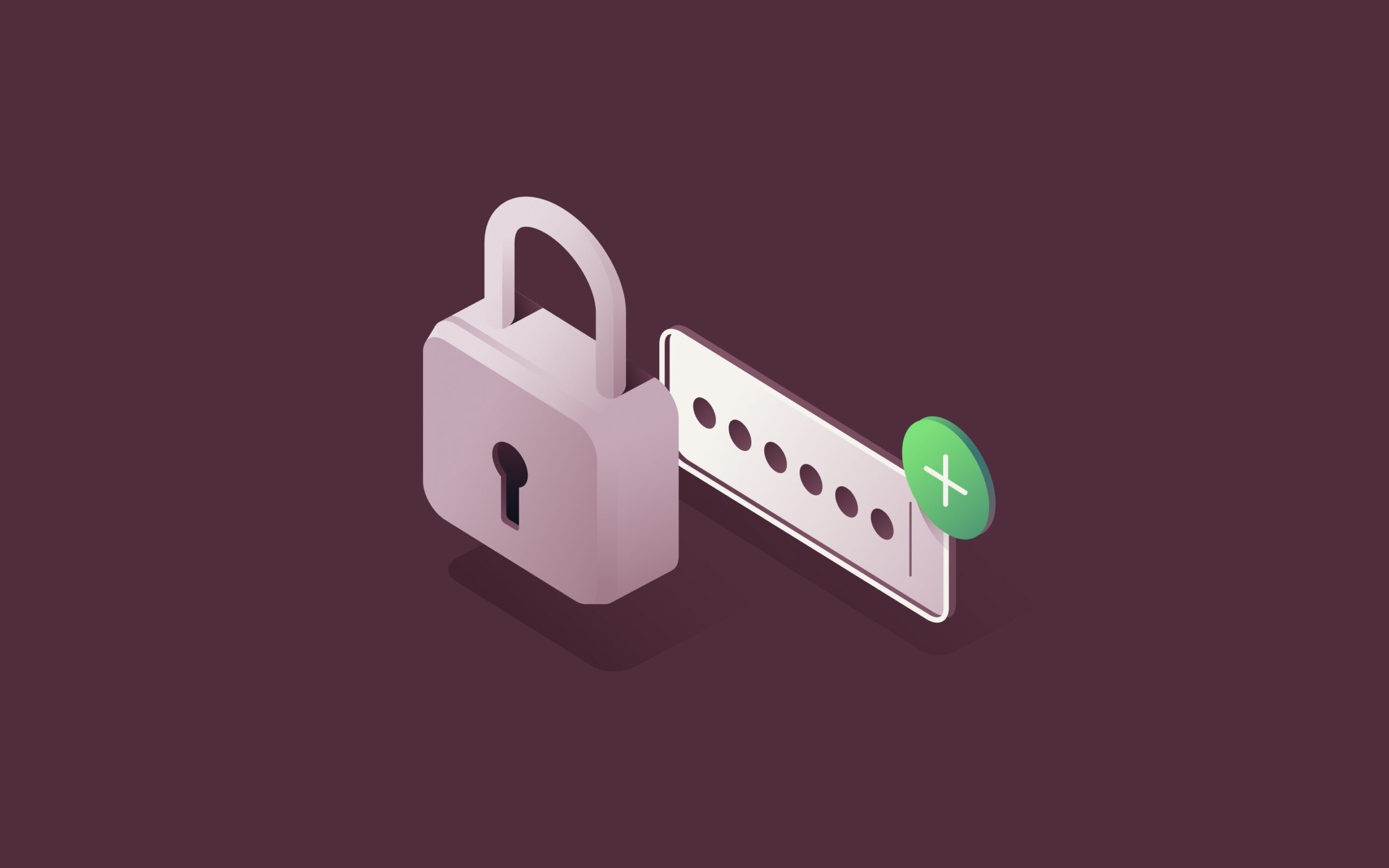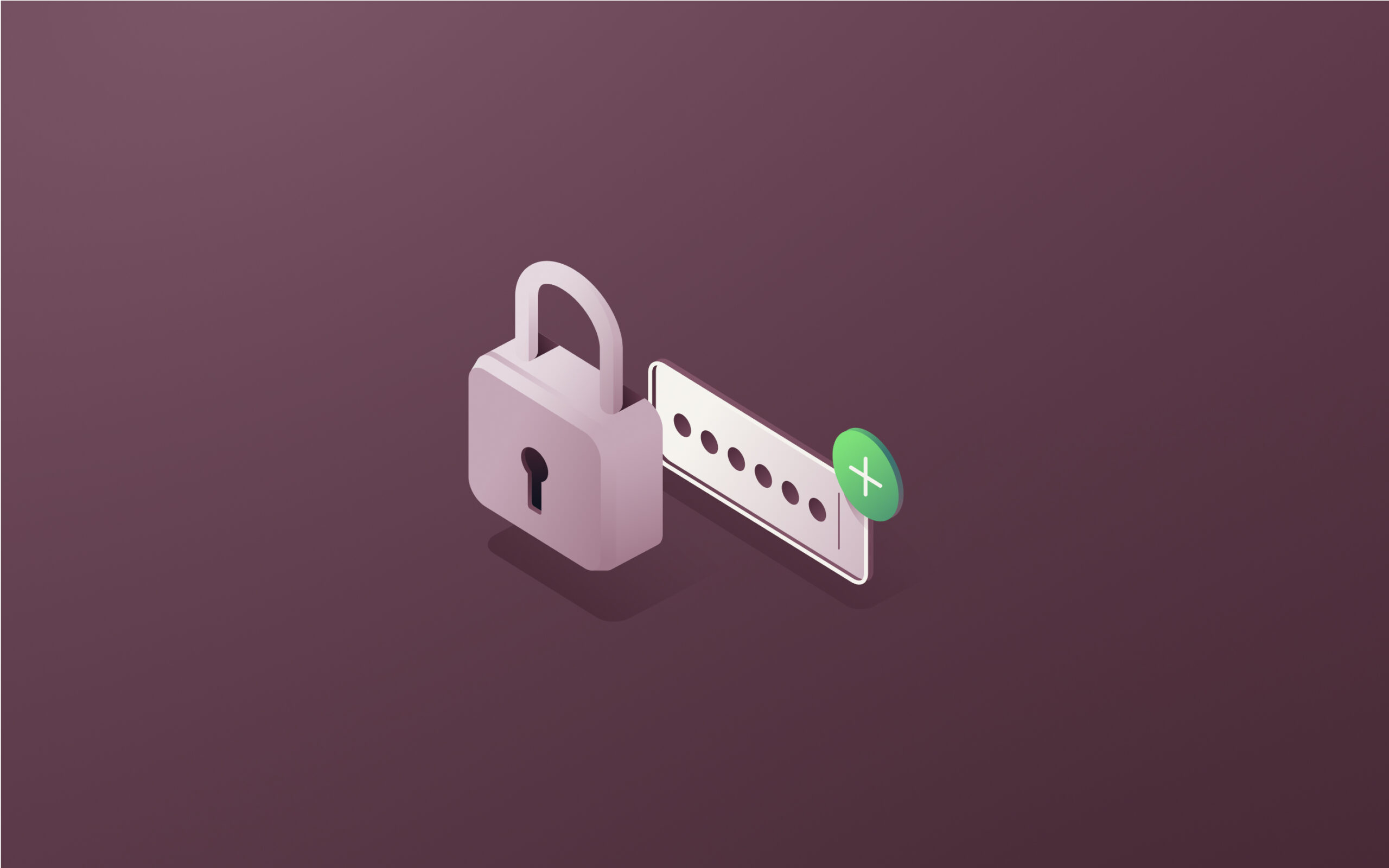Password policy: Best practices, guide & template

"123456" and "password" still topped the list of most common passwords in 2024, despite years of security warnings. The reason is quite simple: without rules in place, people pick easy passwords they can remember. Most of us know we should use stronger passwords, but convenience usually wins out over security concerns.
That's a big problem when you consider that more than 80% of data breaches involve weak or stolen passwords. Hackers don't need sophisticated cracking tools when they can just guess common passwords or try credentials leaked from other websites.
The good news is that a straightforward password policy can dramatically reduce these risks without creating headaches for your users. This article covers everything you need to know about creating and managing password rules that actually work.
What is a password policy?
A password policy is a set of rules that governs how passwords are created, used, and managed within your organization. It establishes standards for password complexity, storage, update frequency, and user responsibilities.
Think of it as setting some ground rules so everyone follows good password practices instead of letting each person decide what's "secure enough" on their own. Without guidelines, you'll end up with a mix of very strong and very weak passwords across your organization.
The trick is finding the right balance. If your rules are too strict, employees will find workarounds (like writing passwords on sticky notes). If they're too loose, your systems remain vulnerable. The right policy creates meaningful protection without creating unnecessary friction for your team.
Password policy standards
When creating your password policy, you don't need to start from scratch. Several established frameworks provide guidance based on extensive security research. These standards include:
NIST SP 800-63B (National institute of standards and technology)
The NIST guidelines represent the U.S. government's recommendations for digital authentication. Their SP 800-63B publication provides specific guidance for passwords (which they call "memorized secrets"). Key recommendations include requiring at least eight characters for user-chosen passwords, comparing against known compromised passwords, allowing at least 64-character maximum length, eliminating mandatory periodic password changes, and avoiding composition rules that require specific character types.
PCI DSS (Payment card industry data security standard)
PCI DSS is a global security standard for entities that store, process, or transmit cardholder data. It consists of twelve requirements organized into six goals focused on building secure networks, protecting data, maintaining vulnerability management, implementing access control, monitoring networks, and maintaining security policies. Requirement 8 specifically addresses identification and authentication access to system components, requiring unique IDs for each user, proper password management, multi-factor authentication (MFA) for remote access, and secure authentication procedures. Companies handling payment cards must comply with these standards to protect cardholder information from breaches.
ISO/IEC 27002
This international standard takes a broader approach to information security. It organizes controls into categories, including organizational, people, physical, and technological controls. For authentication, ISO/IEC 27002 recommends secure authentication technologies based on access restrictions and policies, considering both single and multi-factor authentication methods.
CIS password policy guide (Center for internet security)
The CIS guidelines provide more specific advice. They recommend using passphrases of 14+ characters for password-only accounts and 8+ characters for accounts with MFA enabled. They advise allowing all character types, checking against common password lists, enabling temporary account lockouts after failed logins, and monitoring for signs of attack. Wherever possible, MFA should be implemented, especially for privileged accounts.
7 password policy benefits for businesses
Having a good password policy does more than just tick a security box. Here's how it helps your business in real, practical ways:
Prevents unauthorized access and security breaches
Weak passwords are essentially the equivalent of leaving your office doors unlocked at night. Strong password rules create an actual barrier against unauthorized access. When someone has to guess a 12-character password instead of a 6-character one, it becomes much harder to break in through brute force attacks. Even basic password requirements can stop many common attacks before they start.
Protects sensitive company and customer data
The financial implications of data security are substantial. Strong password policies directly protect the sensitive information that hackers target, including customer data, intellectual property, financial records, and employee information. By securing access to these assets, you're protecting not just data but also your organization's financial health and reputation.
Reduces the risk of phishing attacks
Phishing attacks–where hackers trick people into revealing login credentials–remain among the most common attack vectors. A comprehensive password policy that includes education about phishing and adds MFA can dramatically reduce this risk. Even if someone falls for a phishing attempt, MFA provides an extra layer of protection.
Enhances compliance with cybersecurity regulations
From a cybersecurity compliance perspective, many industries face regulatory requirements around data protection. A strong password policy helps demonstrate compliance with standards like HIPAA for healthcare providers, GDPR and CCPA for companies handling consumer data, SOC 2 for service providers, and PCI DSS for payment processors. Having documented password practices shows regulators you're taking security seriously.
Prevents insider threats and employee negligence
Not all security threats come from outside hackers. Sometimes the biggest risks come from within, either through malicious actions or simple carelessness. Password policies help by limiting access to only what people need, providing clear guidelines, creating accountability through individual credentials, and making it possible to track unusual access patterns.
Reduces IT support costs by minimizing password resets
From an operational standpoint, password reset requests typically represent one of the highest volume categories of IT support tickets, creating significant costs through help desk time and employee downtime. A good password policy balances security with usability to minimize these expenses.
Builds a security-conscious company culture
Perhaps the biggest long-term benefit is how a good password policy helps build security awareness throughout your company. When employees understand why password security matters and see the organization taking it seriously, they become more security-conscious in everything they do. This extends beyond passwords to create a workforce that thinks about security naturally.
7 key password policy requirements
A good password policy needs to cover several essential elements. Here are the key components you should include:
1. Minimum password length requirement
Password length is the single most important factor in password strength. The longer a password, the harder it is to crack. Current best practices suggest at least 8 characters for regular user accounts and 12-14 characters for administrator accounts.
2. Complexity requirements
While length matters most, some complexity helps prevent easily guessable passwords. This typically includes using a mix of uppercase and lowercase letters, numbers, and special characters. However, newer security guidance puts less emphasis on strict complexity rules because they often lead to predictable patterns like "Password123!" that aren't actually very secure. Consider focusing more on length with just basic complexity guidelines.
3. Prohibition of common or reused passwords
Many breaches happen because people use well-known passphrases that have been leaked in previous breaches. Your policy should ban common passwords, prevent reuse of previous passwords (usually the last 5-10), and prohibit using easily guessable information like usernames or your company name. Use technical tools that check passwords against known compromised password lists when people create or change them.
4. Regular password rotation
Opinions have changed about how often passwords should be changed. Traditional advice says every 30-90 days, but research shows this often leads to weaker passwords as people make minimal changes to remember them (like changing "Spring2023!" to "Summer2023!"). Current best practices suggest requiring changes only when there's evidence of a breach, using longer periods (6+ months) if you require regular changes, and focusing more on MFA than frequent password rotation.
5. Multi-factor authentication (MFA) enforcement
Multi-factor authentication dramatically improves security by requiring something you know (password) plus something you have (like a phone app) or something you are (biometrics). Your policy should require MFA for remote access, sensitive systems, and administrator accounts. Consider MFA that adapts based on factors like location or device. This is one of the most effective security controls you can implement, as it prevents access even when passwords are compromised.
6. Secure storage of passwords
How passwords are stored is just as important as how they're created. Your policy should specify encryption requirements, proper hashing algorithms (like bcrypt, Argon2, or PBKDF2), ban storing passwords as plain text, and provide guidelines for password manager use. These measures ensure that even if a system is breached, attackers can't easily extract usable passwords.
7. Account lockout and recovery procedures
Your policy needs to address what happens when login attempts fail or users forget passwords. This includes locking accounts after several failed attempts (typically 3-5), secure identity verification for recovery, appropriate lockout periods, and password reset procedures that don't create new security holes. These measures prevent brute force attacks while giving legitimate users a way to regain access when needed.
6 password policy best practices
Beyond the core requirements, here are some best practices that will strengthen your password security:
1. Avoid storing passwords in plain text
Never store passwords as readable text in databases, configuration files, or documentation. Always use secure hashing algorithms with "salt" (random data added to make passwords harder to crack) when storing password data. This way, even if your password database is compromised, the actual passwords remain protected.
2. Avoid saving passwords in web browsers
While browser password managers are convenient, they're generally not as secure as dedicated password management tools. Browsers often store passwords in ways that can be compromised if someone gains access to the device. Your policy should discourage saving passwords in browsers, especially for sensitive accounts. If browser password storage is allowed at all, limit it to non-sensitive applications and require additional security measures like device encryption and screen locks.
3. Implement MFA and SSO for enhanced security
Single sign-on (SSO) lets users authenticate once and access multiple applications. When combined with MFA, it improves both security and usability. This approach centralizes authentication, reduces the number of passwords people need to remember, and implements unified security policies.
4. Limit the number of allowed login attempts
Account lockout rules prevent automated password guessing by limiting failed login attempts. Your policy should lock accounts after 3-5 failed attempts, increase wait times between attempts, generate alerts when lockout thresholds are reached, and provide secure recovery options. The lockout duration should balance security with usability, as too short doesn't provide enough protection, while too long creates frustration.
5. Update shared account passwords when an employee leaves
Shared accounts create special security challenges. While it's best to avoid them when possible, sometimes they're necessary. When an employee with shared account access leaves, immediately change passwords for all those accounts, update documentation or password managers, and check access logs for any unusual activity before they leave. Better yet, consider using privileged access management software instead of shared accounts.
6. Prevent employees from accessing company servers on public computers
Accessing company resources from public computers creates significant risks. Your policy should restrict access from public computers, provide clear guidelines against using shared devices, offer secure alternatives like company-managed devices, and implement authentication that checks login location and device health. These controls protect your systems even when people might make poor security choices.
How to implement a password policy in your business
Creating a password policy document is just the first step. Here's how to put it into practice effectively:
Step 1. Define policy requirements
Start by understanding what your company actually needs. Assess your current security setup and identify weaknesses. Balance security needs with practical usability concerns. Involve people from IT, security, business departments, and legal to get different perspectives on what's needed and what's realistic.
Step 2. Enforce password rules through IT systems
Technical enforcement is essential; don't rely on people to follow rules manually. Configure password requirements in your systems, use tools that check passwords against compromised password databases, and deploy password management solutions. These technical controls make compliance automatic rather than optional and take the burden of security decisions off your users.
Step 3. Educate employees on password best practices
Even with technical controls, user understanding is crucial. Create clear, jargon-free training materials that explain why password requirements exist, not just what the rules are. Give practical tips for creating strong but memorable passwords. Address common misconceptions about password security. Consider using real examples to show how password attacks work.
Step 4. Monitor and update the policy regularly
Security is never "done"; it requires ongoing attention. Review your policy at least yearly to keep up with changing threats and technologies. Track metrics like password reset frequency, lockout incidents, and successful/failed login attempts to identify areas for improvement. This continuous improvement ensures your password protection remains effective as both threats and your business evolve.
Password policy template for organizations
Here's a template you can adapt for your organization's needs:

Streamline password policy design and management with Rippling
Managing password policies across an organization can be challenging, especially as you grow. Rippling simplifies this process by providing integrated identity and access management capabilities that enforce password policies automatically.
Unlike traditional approaches that require manual configuration across multiple systems, Rippling provides a centralized IAM platform where you can:
- Define and enforce password policies based on user roles, departments, or other attributes
- Implement and manage multi-factor authentication across all your applications
- Automate user lifecycle management to ensure proper access provisioning and deprovisioning
- Deploy single sign-on to reduce password fatigue while maintaining security
- Monitor password policy compliance through comprehensive reporting
Rippling's built-in password manager also allows teams to securely store and share credentials when necessary, eliminating risky practices like sticky notes or unencrypted spreadsheets.
By connecting identity management with your broader HR and IT systems, Rippling ensures that access controls remain current as employees join, change roles, or leave the organization. This integration eliminates security gaps that often occur during transitions and reduces the administrative burden of managing access across multiple systems.
Password policy FAQs
Should employees use password managers?
Yes, password managers should be encouraged as they help employees create strong, unique passwords for each account while securely storing them. Look for password managers with strong encryption, multi-factor authentication, and admin features that provide visibility and control.
What does the 8-4 rule for password states?
The "8-4 rule" refers to a password guideline that recommends passwords should be at least 8 characters long and include all four character types: uppercase letters, lowercase letters, numbers, and special characters.
What is an example of a password policy?
A modern password policy might require 12+ character passwords checked against compromised password lists, MFA for sensitive systems, password changes only if compromised, 16+ character random passwords for privileged accounts, prohibiting password sharing, and account lockouts after failed attempts.
This blog is based on information available to Rippling as of April 18, 2025.
Disclaimer: Rippling and its affiliates do not provide tax, accounting, or legal advice. This material has been prepared for informational purposes only, and is not intended to provide or be relied on for tax, accounting, or legal advice. You should consult your own tax, accounting, and legal advisors before engaging in any related activities or transactions.









